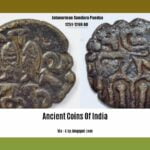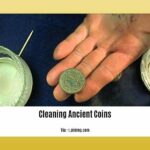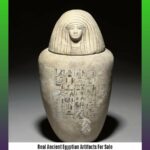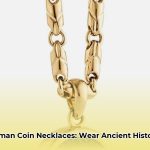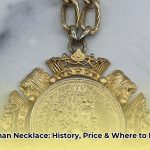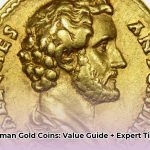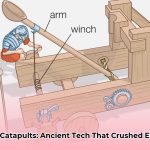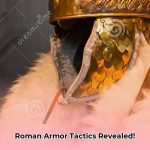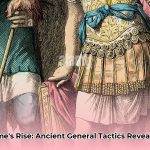Ready to dive into the captivating world of ancient Roman gold coins? This comprehensive guide, "Collecting Roman Gold Coins: A Definitive Guide to Rarity, Value, and Authentication," serves as your essential companion. For a broader view, see [ancient Roman money](https://www.lolaapp.com/ancient-roman-money). Whether you're a curious beginner or an experienced numismatist, we'll demystify these remarkable artifacts, from the iconic aureus to the enduring solidus. Learn what truly drives their value, how to expertly identify genuine pieces, and the best practices for acquiring, preserving, and responsibly managing your own tangible pieces of history. Get set to uncover the secrets of collecting Roman gold coins, step by step, and ensure your treasures remain secure for generations to come.
## The Enduring Allure of Roman Gold Coinage
Why do these ancient golden discs continue to command such fascination and value in the modern era? The enduring appeal of **ancient Roman gold coins** stems from a powerful blend of historical significance, unparalleled artistic craftsmanship, and inherent precious metal worth. Holding one of these coins offers a profound connection to a bygone civilization; they silently witnessed the triumphs and tribulations of emperors and the daily lives of Roman citizens. Each coin is a miniature time machine, a direct link to a past both grand and distant, fueling both scholarly interest and the fervent passion of collectors worldwide.
## Understanding Roman Gold: Aureus, Solidus, and Their Historical Context
Navigating the landscape of Roman gold coinage begins with recognizing its two primary denominations: the aureus and the solidus. These represent the pinnacle of Roman currency, reflecting distinct periods of the Empire's economic and political evolution.
### The Majestic Aureus: The Gold Standard of the Early Empire
The **aureus** stood as the gold standard for the early Roman Empire, typically weighing around 7.5 to 8 grams (equivalent to 25 silver denarii). Introduced during the Roman Republic, it gained immense prominence under Julius Caesar and Augustus, becoming a key instrument for vast state expenditures, military pay, and imperial propaganda. Aurei often feature sharply struck portraits of emperors, showcasing the intricate artistry and distinctive styles of the era. Their scarcity, particularly certain types issued during brief reigns or pivotal historical moments, significantly elevates their numismatic value today. For instance, the Galba Aureus (AD 68–69), minted during the turbulent "Year of the Four Emperors," is exceptionally rare due to its short production run and historical importance, making it a highly coveted piece.
### The Enduring Solidus: A Beacon of Stability
Emperor Constantine I famously introduced the **solidus** in 309 CE, standardizing Roman gold coinage in response to the crippling economic instability and hyperinflation of the Crisis of the Third Century. Weighing approximately 4.5 grams (1/72 of a Roman pound), the solidus became renowned for its consistent weight and remarkably high purity (often 24-carat gold). This standardization provided a stable and trustworthy currency that endured for over 700 years, underpinning the Byzantine Empire's economy long after the Western Roman Empire's decline. Solidi are generally more abundant than aurei but still offer immense historical and artistic appeal, representing a testament to imperial resilience and monetary reform.
## Mastering Authentication and Professional Grading
In the world of **ancient Roman gold coins**, authentication and professional grading are not merely advisable; they are absolutely essential. These processes safeguard your investment and provide confidence in the genuineness and quality of your acquisition, mitigating the significant risk of encountering sophisticated counterfeits.
### The Imperative of Authentication
Given the high value and historical significance of Roman gold, the market unfortunately attracts numerous forgeries. Expert **authentication** verifies a coin's legitimacy, distinguishing genuine ancient artifacts from modern replicas, altered pieces, or ancient counterfeits. Reputable dealers and professional grading services employ extensive knowledge, specialized equipment (such as X-ray fluorescence analysis for metal composition), and extensive databases to confirm authenticity, often providing certificates or guarantees. Never risk your capital on an unverified piece when expert verification is available and crucial.
### The Role of Professional Grading
**Grading** rigorously assesses a coin's condition and preservation, which directly impacts its market value. Independent services, such as NGC Ancients (Numismatic Guaranty Company Ancients) or PCGS (Professional Coin Grading Service), provide impartial, standardized evaluations. A coin's grade considers factors like strike quality (how well the design was impressed), surface preservation (absence of scratches, corrosion, or environmental damage), and the extent of wear. A higher grade, reflecting a well-preserved, finely detailed specimen, invariably translates to a significantly higher market price. For instance, a coin graded "Good Fine" will be considerably less valuable than an identical coin graded "Choice Very Fine."
## Key Factors Influencing Value
The market value of **ancient Roman gold coins** is not solely determined by their gold content. A complex combination of numismatic attributes and profound historical context dictates their appeal and price.
### Condition: The Visual Narrative of Time
The physical condition of a coin is paramount. A coin with a **sharply struck portrait** of an emperor, clear legends, and a **lustrous golden surface** will command significantly higher prices. Details such as the clarity of the emperor's features, the sharpness of the reverse designs (e.g., temples, deities, historical events), and the overall integrity of the flan (the blank metal disk) are critical. Even minor wear, scratches, or evidence of improper cleaning can substantially affect value. Coins exhibiting their original mint luster are exceptionally prized.
### Rarity: The Dynamics of Supply and Demand
**Rarity** plays a crucial role. Coins issued by short-reigning emperors (like Galba or Otho), those commemorating unique or pivotal historical events (such as the EID MAR Denarius of Brutus, celebrating Caesar's assassination), or those with exceptionally limited mintages are inherently more valuable due to their scarcity. This "supply and demand" dynamic means that fewer existing examples of a particular type will drive its price upward regardless of its historical period or general condition, provided it meets acceptable preservation standards.
### Historical Significance: Connecting to the Past
A coin's **historical significance** can dramatically elevate its worth. Coins depicting iconic figures like Julius Caesar (especially those minted during his lifetime, being the first to feature a living Roman), those struck during pivotal battles, or issues celebrating significant imperial achievements resonate deeply with collectors. These coins offer a tangible link to specific moments and personalities within Roman history, transforming a mere artifact into a powerful storytelling medium. For example, a coin celebrating Trajan's Dacian conquests might embody centuries of imperial ambition, directly influencing its perceived and actual value.
### Artistic Craftsmanship: Miniature Masterpieces
Many Roman gold coins are miniature works of art, demonstrating remarkable **artistic craftsmanship**. The skill of the engraver, the aesthetics of the design, and the intricate details can significantly enhance a coin's desirability and value. Consider the Nero Sestertius depicting the Port of Ostia; its detailed portrayal of ships, lighthouses, and warehouses is a testament to the artistry of Roman die-engravers, making it highly sought after beyond its rarity or metallic content.
## Building Your Roman Gold Collection: A Strategic Path
Embarking on a journey into **ancient Roman gold coins** collecting can be incredibly rewarding. For novice collectors, a strategic and informed approach is vital to ensure a successful start and avoid common pitfalls.
1. **Start with Common, Well-Preserved Coins:** Focus on readily available aureus or solidus types that are in good condition. This allows you to gain experience, understand market dynamics, and build confidence without a prohibitive initial investment. Learning about general coin features and grading standards is easier with more common examples.
2. **Acquire Knowledge from Reputable Dealers:** Establish relationships with established **numismatic dealers**, both online and physical brick-and-mortar stores. They are a wealth of information regarding specific coin types, historical contexts, and market trends. Their expertise, often gained over decades of experience, is invaluable for a new collector.
3. **Prioritize Authentication:** Always make authentication your top priority. Never purchase a Roman gold coin without a clear guarantee of authenticity from a trusted source, or without having it evaluated by a certified grading service like NGC Ancients or PCGS. This step protects you from sophisticated counterfeits, which are prevalent in the market for high-value items.
4. **Set and Adhere to a Budget:** Determine your financial comfort zone before you begin. It's easy to get caught up in the excitement of collecting, but a firm budget helps maintain financial discipline and ensures sustainable growth of your collection. You can always expand your collection as your knowledge and resources increase.
## Advancing Your Collection: For Experienced Numismatists
For seasoned collectors, the pursuit becomes more specialized, focusing on depth, rarity, and the long-term preservation of exceptional pieces.
1. **Pursue Rare and Historically Significant Coins:** Move beyond common types to seek out coins of exceptional rarity, those issued by obscure emperors, or issues commemorating unique historical events. These often represent the greatest potential for long-term value appreciation and scholarly interest.
2. **Consider Professional Conservation:** For high-value or delicate specimens, professional **coin conservation** can prevent deterioration and enhance a coin's long-term stability. This highly specialized field should only be undertaken by certified conservators, as improper cleaning or treatment can irreversibly damage a coin and significantly reduce its value.
3. **Network with Experts and Organizations:** Engage with the wider numismatic community. Join professional numismatic organizations like the American Numismatic Association (ANA), attend specialized conferences, and connect with fellow advanced collectors and academic experts. This networking provides access to invaluable insights and potential acquisition opportunities that are not publicly advertised.
4. **Explore Auctions and Private Sales:** While reputable dealers remain crucial, advanced collectors often find unique opportunities through specialized auction houses (such as Classical Numismatic Group – CNG, or Roma Numismatics) and carefully vetted private sales. Exercising extreme due diligence is paramount in these channels, including requesting full provenance (the history of ownership) and ensuring independent authentication.
## Where to Acquire and Divest Your Coins
Identifying reliable channels for both purchasing and selling **ancient Roman gold coins** is fundamental to a secure and successful collecting experience.
* **Reputable Dealers:** Establish long-term relationships with reputable numismatic dealers, both those operating online and those with physical storefronts. Their expertise, established reputation, and explicit guarantees of authenticity provide a critical layer of trust and security. Many leading dealers maintain extensive inventories and provide excellent advisory services, often specializing in specific periods or types of coinage.
* **Auction Houses:** Major auction houses specialize in high-value ancient coinage, offering a wide selection of rare and historically significant pieces. While competitive, auctions can be excellent venues for acquiring exceptional coins. However, it's crucial to perform thorough research on lots beforehand and understand all buyer's premiums, terms, and conditions before bidding.
* **Private Sales:** Engaging in private sales (directly from another collector) requires the utmost caution and comprehensive due diligence. Always insist on full provenance, arrange for independent authentication by a trusted third party like NGC Ancients, and never proceed if any aspect seems questionable or lacks transparency.
## Preserving Your Ancient Gold: Care and Ethical Considerations
Successfully acquiring a piece of Roman history is just the first step. Protecting your **ancient Roman gold coins** for future generations requires proper care, handling techniques, and an understanding of ethical collecting practices.
* **Proper Storage:** Store your coins in inert, archival-quality holders, slabs (from grading services), or albums designed specifically for numismatics. These materials are free from chemicals that could react with the metal. Keep your collection in a stable environment, away from direct sunlight, extreme temperature fluctuations, high humidity, and airborne pollutants that can cause tarnish or damage.
* **Careful Handling:** Always handle your coins by their edges, preferably wearing clean cotton gloves. This prevents the transfer of oils, acids, and dirt from your skin, which can cause permanent damage, unsightly fingerprints, or dull a coin's natural luster over time.
* **Professional Conservation:** When in doubt about a coin's condition, or if it appears to require cleaning or restoration, never attempt to do it yourself. Consult with a professional numismatic conservator. Improper cleaning can cause irreversible damage, significantly reducing a coin's historical integrity and monetary value. The debate around "cleaning" is contentious; while some experts argue for professional, minimal conservation to reveal details, many collectors believe any cleaning diminishes a coin's original state and value, preferring a natural patina.
| Pro (Expert Conservation) | Con (General Cleaning) |
| :------------------------------------------------------- | :-------------------------------------------------------------------------- |
| May reveal hidden details and improve aesthetic appeal. | Almost any cleaning can diminish a coin's value for certain collectors. |
| Can stabilize active corrosion or harmful surface elements. | Irreversible damage can occur with improper techniques, even by experts. |
| Expert work aims to preserve, not alter, historical integrity.| The impact of cleaning on a coin's value remains a point of intense debate. |
### Ethical and Legal Considerations
Responsible collecting extends beyond proper physical care. It also involves adhering to ethical guidelines and legal requirements, particularly concerning cultural heritage laws. Many countries, especially those with rich ancient histories like Italy, Greece, and Turkey, have strict laws governing the export of antiquities.
* **Provenance is Key:** Always seek clear **provenance** for any ancient coin you acquire. This refers to the documented history of ownership and transfer. Coins with an established, legal provenance are generally preferred and safer investments.
* **Cultural Property Laws:** Be aware of international and national cultural property regulations. Coins illegally removed from their country of origin after specific dates (e.g., 1970 UNESCO Convention) may be subject to seizure and repatriation, even years after purchase. Reputable dealers rigorously verify the legality of their stock.
* **Due Diligence:** When purchasing, especially from international sources or private sales, ask for documentation of legal export or prior legal acquisition in your country. This protects you from inadvertently participating in the illicit antiquities trade.
## Essential Resources for Collectors
To deepen your understanding and connect with the numismatic community, leverage these valuable resources:
* **NGC Ancients:** A leading grading and authentication service specializing in ancient coinage, providing expert opinions and secure encapsulation.
* **American Numismatic Association (ANA):** A comprehensive educational organization offering conventions, courses, and publications for collectors of all levels. Their library is a vast resource.
* **Classical Numismatic Group (CNG):** A globally recognized dealer and auction house specializing in ancient, medieval, and world coins. Their auction catalogs are excellent educational tools.
* **Forum Ancient Coins (www.forumancientcoins.com):** An extensive online resource with numismatic wikis, forums, and identification tools. An invaluable community for collectors.
* **Wildwinds (www.wildwinds.com):** An extensive online reference database for ancient Greek, Roman, and Byzantine coins, crucial for identification and comparison.
* **Digital Library Numis (DLN):** A growing resource for digitized numismatic literature.
## Practical Steps to Authenticate a Roman Aureus
Authenticating a Roman aureus requires meticulous examination and a keen eye for historical detail. This methodical approach helps distinguish genuine ancient artifacts from sophisticated forgeries.
1. **Examine Weight and Dimensions:** Compare the coin's precise weight and diameter to established standards for that specific type of aureus. Significant deviations can indicate a modern forgery (e.g., cast copies may be lighter, or slug-filled fakes might be heavier) or ancient clipping. Authentic weights generally fall within a narrow historical range.
2. **Assess Metal Composition:** Genuine aurei were struck from high-purity gold, often 22-24 karats. While simple visual inspection can offer clues (e.g., color inconsistencies), a non-invasive professional assay (e.g., XRF analysis) can accurately verify the metal content without damaging the coin. Inauthentic pieces may show alloy impurities or a base metal core.
3. **Analyze Style, Engraving, and Fabric:** Master forgers often struggle to perfectly replicate the distinctive artistic style and intricate engraving details of ancient dies. Compare the coin's portraiture, lettering, and reverse designs to multiple authenticated examples from reputable sources. Look for subtle "out-of-place" characteristics, anachronisms, or "softness" in details typical of cast fakes. Genuine ancient coins exhibit a unique "fabric" – the way the metal flows during striking, which is difficult to reproduce.
4. **Magnification is Key:** Utilize a magnifying glass or a low-power microscope (e.g., 10x-30x magnification) to meticulously inspect the coin's surface. Look for tell-tale signs of modern manufacturing processes, such as casting bubbles (indicating a poured molten metal copy), file marks (from removing casting seams), or granular surfaces that differ from properly struck coins. Look for consistent flow lines and die breaks characteristic of genuine striking.
5. **Check for Seam Lines:** Many cast forgeries are produced by joining two halves of a mold, which can leave a faint but discernible seam line along the edge of the coin where the halves met. This is a common indicator of a fake, completely absent on genuine struck coins.
6. **Compare Die Varieties and Provenance:** Advanced authentication involves comparing the coin's specific die impression to documented ancient die varieties. Numismatic databases and scholarly works often catalogue known dies, and a coin that doesn't match any known die for its type or emperor should raise immediate suspicion. Additionally, a clear, verifiable provenance adds significant confidence to a coin's authenticity.
By blending diligent examination with expert advice and a commitment to ethical practices, your journey through numismatics promises both profound discovery and lasting historical insight, allowing you to truly unlock the riches of ancient Roman gold coins.
---
**Core Insights into Ancient Roman Gold Coins:**
* **Historic Tangibility & Economic Insight:** Ancient Roman gold coins offer a direct, tangible link to history and provide invaluable insights into the economic and political life of the Roman Empire, showcasing shifts from the aureus to the solidus driven by imperial needs and crises.
* **Value Multipliers Beyond Metal:** A coin's market value is primarily driven by its condition (preservation), rarity (scarcity of type/emperor, often due to short reigns or unique events), historical significance (connection to iconic figures or pivotal moments), and artistic craftsmanship, rather than solely its gold content.
* **Authentication as Investment Shield:** Due to pervasive counterfeiting risks, rigorous authentication—through reputable dealers and professional grading services like NGC Ancients—is absolutely paramount for new and experienced collectors to protect their investments and ensure the validity of their historical acquisitions.
* **Ethical Collecting is Imperative:** Responsible collecting involves not only proper care and handling but also adherence to cultural heritage laws and a commitment to verifiable provenance, safeguarding the integrity of the hobby and the historical record.
Latest posts by Lola Sofia (see all)
- Unlock ancient roman remedies: Natural treatments revealed for modern wellness. - August 17, 2025
- Unlock History: Ancient Roman Coin Necklace Trends & Buys - August 17, 2025
- Beyond Gladiators: Achievements in Ancient Rome Still Shaping Our World - August 17, 2025
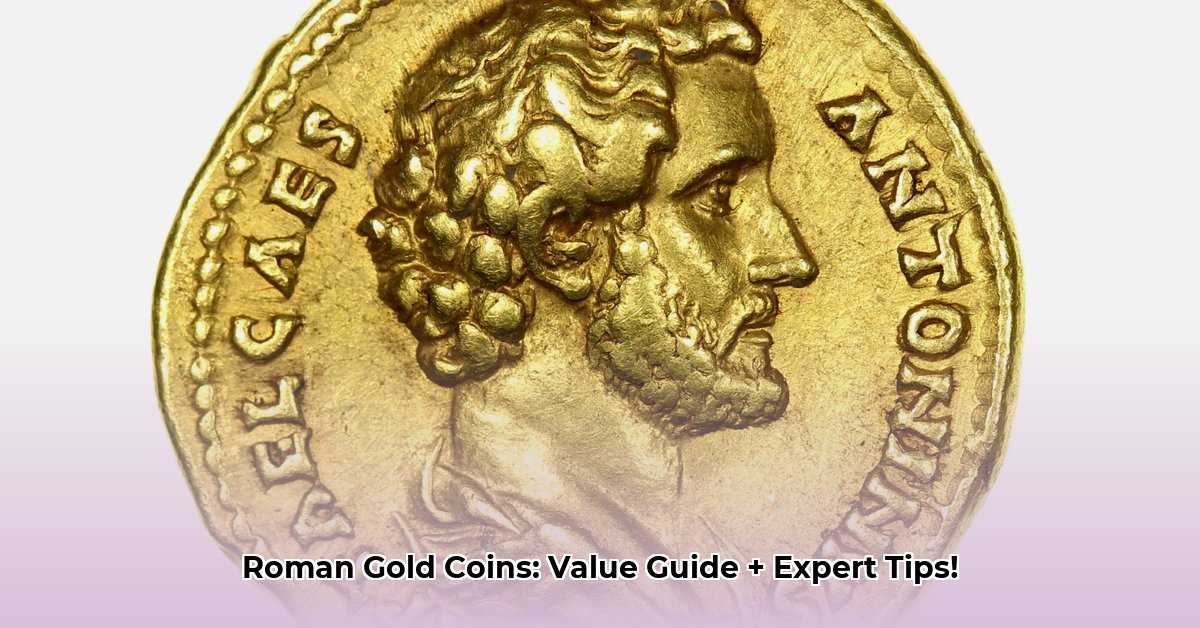
![[Ancient Coins of India Price]: Unveiling the Value of Historical Treasures ancient-coins-of-india-price_2](https://www.lolaapp.com/wp-content/uploads/2023/12/ancient-coins-of-india-price_2-150x150.jpg)
